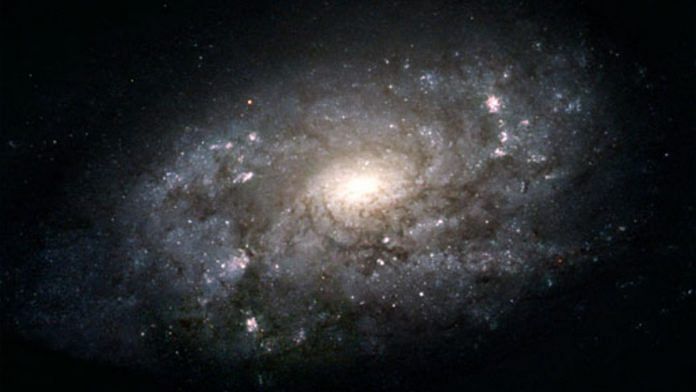I f you want to visit Uranus, you need to start planning early. Designing and building a craft to cross the billion-plus miles might take a decade, and the cruise to the solar system’s third-largest planet could require an additional 15 years.
Undaunted, the National Academies of Sciences, Engineering and Medicine recommended last month that the U.S. should launch a mission to Uranus for the first time since 1986.
Visiting the outer reaches of the solar system is likely to cost more than $4 billion. But the return on that investment will go well beyond the groundbreaking discoveries craved by scientists and outer space buffs. It will also play an important role in attracting and training the next generation of space scientists and engineers, ensuring continued U.S. leadership of a field it’s dominated for decades.
During the early years of the space race, human crews received most of the attention. But the U.S. was also establishing itself as a formidable leader in exploring the solar system with robotic spacecraft. These missions helped develop and maintain a workforce proficient in a range of skills, from low-light photography to power systems appropriate for long space missions.
By the mid-1960s the National Aeronautics and Space Administration’s confidence in its abilities led to planning for a grand tour of the solar system’s outer planets. Launches would take place in the late 1970s, with flybys occurring into the late 1980s.
For NASA and its research laboratories, the long wait was a feature, not a bug. As far back as 1967, the Jet Propulsion Laboratory, the federally funded research and development center that’s built and managed many of NASA’s interplanetary explorers, used the grand tour as a means to recruit. For early scientists and engineers in search of stable employment, the lure of a groundbreaking project that lasts into middle-age was irresistible. In time, those recruits transformed the grand tour concept into the Voyager 1 and 2 spacecraft that launched in 1977 (and continue to fly into interstellar space).
After zipping by Jupiter and Saturn, Voyager 2 made humanity’s only visit to Uranus in 1986. The brief flyby revealed 11 previously unknown moons (some of which might contain oceans), two rings, a bizarre magnetic field unlike anything else in the solar system and temperatures that barely fluctuate between the poles and the equator. After Voyager, NASA sent craft that orbited Jupiter and Saturn, deepening knowledge of the gas-giant planets. But the mysterious ice giants – Uranus and Neptune – received no return visits.
That’s changing for an unexpected reason. Over the last several years scientists have confirmed more than 5,000 planets orbiting stars in other parts of the galaxy, most of them unlike anything in our solar system.
“So our lack of knowledge about Uranus and Neptune is now a limiting factor in our understanding of planetary science,” said Heidi Hammel, vice president of science at the Association of Universities for Research in Astronomy, a consortium that manages astronomical observatories, including the Hubble Space Telescope, via a Zoom call. Last month, that lack of knowledge led the National Academy of Sciences to recommend that a Uranus probe and orbiter be NASA’s top priority over the next decade.
Hammel doesn’t foresee any serious technical barriers to a successful mission. Rather, the greatest challenge is convincing Congress that a mission that won’t meet its target until the 2040s is a worthwhile investment.
Hammel, who was a member of the imaging team for Voyager 2 when it visited Neptune in 1989, thinks it is. “Voyager was built by people who thought about it when I was in elementary school,” she said. “And it launched when I was in high school.”
Similarly, Hammel explained, the next Uranus mission should be built for someone who’s in elementary school right now. “Twenty years from now, she’ll be a fresh young postdoc and her missions will be there and she’ll be ready to go,” Hamel said.
NASA will be keen to have her. A 2020 report by NASA’s inspector general found that 6,000 of the agency’s 11,000 science and engineering employees are over 50, with nearly half of those eligible for retirement. Long-term programs, such as a Uranus orbiter, will be needed to inspire, recruit and retain the talent necessary to maintain U.S. leadership in space exploration.
For Hammel, and the current generation of space scientists, that young scientist symbolizes much more than a U.S. edge in solar system navigation or deep space probe heating.
“I think that there’s something in the American psyche that says we can do things for the future,” Hammel said. “That’s what a great nation does. It’s what I work for.”
A return trip to Uranus is a good way to prove that she’s right. NASA and Congress should start the countdown. – Bloomberg
Also read: Space is not silent. New NASA audioclip reveals what blackholes sound like



